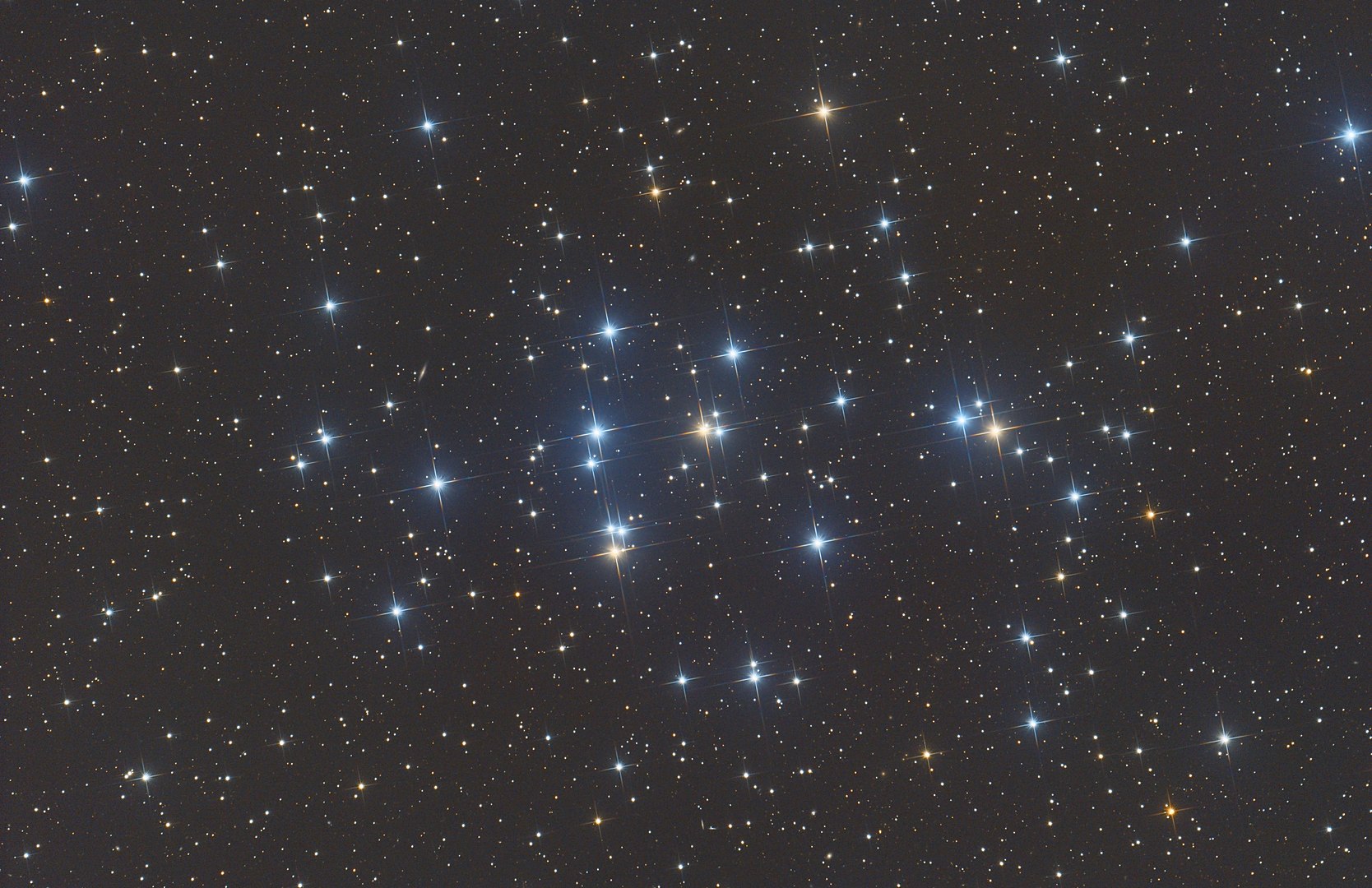Look up and see the half-lit first quarter moon buzz the Beehive Cluster tonight
The moon will appear alongside the Beehive Cluster, a collection of stars also known as Messier 44.

The moon will be half-illuminated on Thursday (April 27) when it reaches the phase of its 29.5-day lunar cycle known as the first quarter moon.
From New York City the first quarter moon will be visible soon after it rises at around 11:44 a.m. EDT (1544 GMT) until just prior to the moon setting at 2:48 a.m. EDT on April 28 (0648 GMT), according to In the Sky.
The first quarter moon will be visible across the globe throughout the evening at local times. Which side of the moon appears to be lit differs based on which hemisphere of the planet an observer is located in, due to the orientation of the moon.
Related: What is the moon phase today? Lunar phases 2023

Looking for a telescope to observe the moon or anything else in the sky? We recommend the Celestron Astro Fi 102 as the top pick in our best beginner's telescope guide.
Tonight's first quarter moon will appear close to the Beehive Cluster (M44), a cluster of stars some 600 light-years away in the Cancer constellation.
Under optimal viewing conditions, this cluster appears as a small cloud-like object to either the unaided eye or binoculars. Through a telescope, individual stars can be observed.
The first quarter moon falls a quarter of the way through a full lunar cycle and exactly halfway between the completely dark new moon, which signals the start of a new lunar cycle and the completely illuminated full moon. As the moon progresses toward the full moon, light from the sun moves across the face that it shows to Earth, with astronomers referring to this progression as "waxing."
Breaking space news, the latest updates on rocket launches, skywatching events and more!
After the next full moon, the Flower Moon which falls on May 5, the illuminated face of the moon will begin to recede, at which time astronomers will refer to it as the "waning moon." This leads to the third quarter moon, at which time the moon will once again be half-illuminated.
The progression of light across the lunar face won't be the only change that the moon undergoes as it progresses through the lunar cycle from the new moon to the full moon passing through its first quarter-moon phase. The moon will also rise and set later and later each day and night. During the new moon phase, the moon rises and sets roughly with the sun, meaning it isn't visible for most of the night. By the time of the first quarter moon, the moon will rise around midday and will set after midnight in the early morning.
When the Flower Moon arrives, the moon will rise at around sunset and will itself set at around sunrise. After this, the moon will begin to set an hour earlier each night. This leads to the rising and setting of the moon in its third quarter phase, which appears as the mirror opposite of the first quarter moon. The third quarter moon will rise around midnight and set around midday.
If you hope to catch a look at the features of the moon close-up, our guides to the best telescopes and best binoculars are a great place to start.
And if you're looking to snap photos of the moon or the night sky in general, check out our guide on how to photograph the moon, as well as our best cameras for astrophotography and best lenses for astrophotography.
Editor's Note: If you snap an image of the first quarter moon and would like to share it with Space.com's readers, send your photo(s), comments, and your name and location to spacephotos@space.com.

Robert Lea is a science journalist in the U.K. whose articles have been published in Physics World, New Scientist, Astronomy Magazine, All About Space, Newsweek and ZME Science. He also writes about science communication for Elsevier and the European Journal of Physics. Rob holds a bachelor of science degree in physics and astronomy from the U.K.’s Open University. Follow him on Twitter @sciencef1rst.

